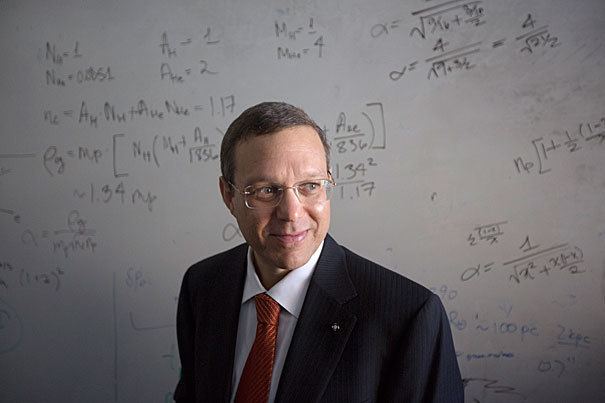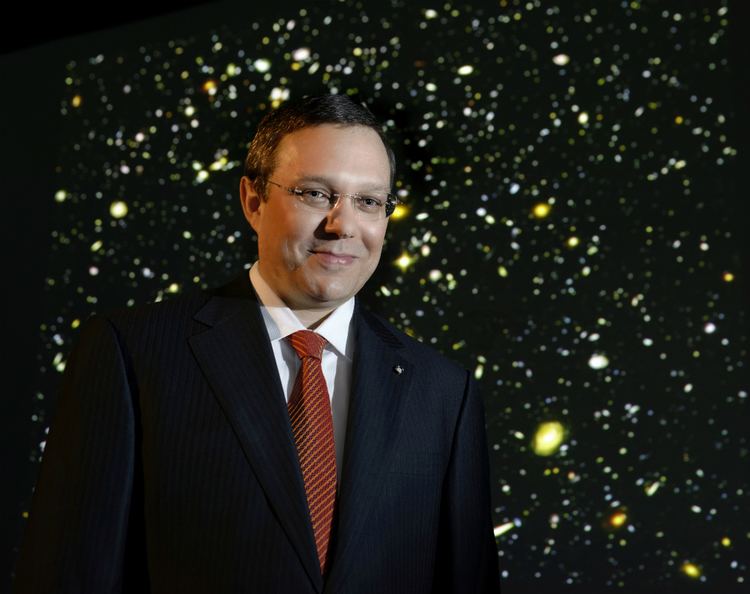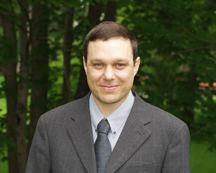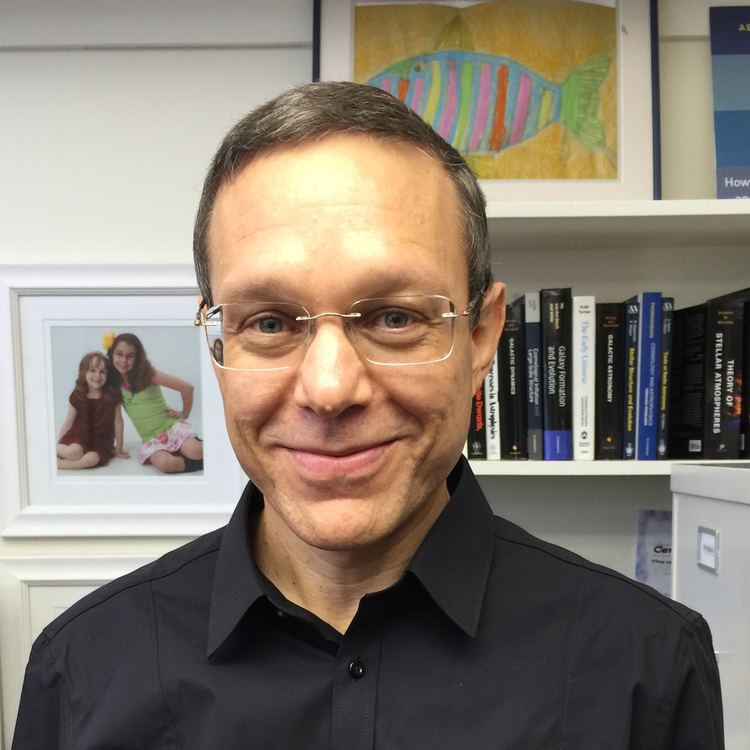Name Avi Loeb | Role Physicist | |
 | ||
Books How Did the First Stars and, The First Galaxies in the Unive, First light in the universe | ||
Physicist avi loeb the habitability of the early universe
Abraham (Avi) Loeb is an American theoretical physicist who works on astrophysics and cosmology. Loeb is the Frank B. Baird Jr. Professor of Science at Harvard University. He serves as Chair of the Harvard Astronomy department, Chair of the Advisory Committee for the Breakthrough Starshot project - which aims to launch lightweight spacecraft towards the nearest stars using a powerful laser, founding director of Harvard's Black Hole Initiative - the first interdisciplinary center worldwide dedicated to the study of black holes and director of the Institute for Theory and Computation (ITC) within the Harvard-Smithsonian Center for Astrophysics. Loeb is an elected fellow of the American Academy of Arts and Sciences, the American Physical Society, and the International Academy of Astronautics, as well as Vice Chair of the Board on Physics and Astronomy of the National Academies. Within Harvard, Loeb serves on the President's Task Force on Diversity and Belonging, the Provost's Allston Academic Planning Committee, and the FAS Dean's Faculty Resources Advisory Committee. In December 2012, TIME magazine selected Loeb as one of the 25 most influential people in space. In 2015, Loeb was appointed as the Science Theory Director for the Breakthrough Initiatives of the Breakthrough Prize Foundation.
Contents

Black holes avi loeb
Career

Loeb was born in Israel in 1962 and took part in the national Talpiot program before receiving a graduate degree in plasma physics at age 24 from the Hebrew University in Jerusalem. Between 1988-1993, Loeb was long-term member at the Institute for Advanced Study in Princeton, where he started to work in theoretical astrophysics. In 1993 he moved to Harvard University as an assistant professor in the department of astronomy, where he was tenured three years later.

Loeb had received many honors, including the Kennedy prize in 1987, the Guggenheim Fellowship in 2002, the Salpeter Lectureship at Cornell University in 2006, the Bahcall Lectureship at Tel Aviv University in 2006, the Merle Kingsley Lectureship at Caltech in 2007, the Australian Institute of Physics Lectureship at the University of Melbourne in 2007, the Distinguished Visiting Lectureship at the Carnegie Observatories in 2009, the Las Cumbres Observatory Lectureship at Santa Barbara in 2011, the Sackler Lectureship at Leiden Observatory in 2011, the Galileo Galilei Chair ("Cattedra Galileiana") for 2011-12 from Scuola Normale Superiore in Pisa, Italy, and the Miegunyah Distinguished Visiting Fellowship for 2013 at the University of Melbourne in Australia. For over two decades he held a visiting professorship at the Weizmann Institute of Science, and since 2011 he was awarded a Sackler Professorship by special appointment in the School of Physics and Astronomy at Tel Aviv University. In 2012 Loeb was elected as a member of the American Academy of Arts and Sciences. In 2013, Loeb was awarded the Chambliss Astronomical Writing Award by the American Astronomical Society for the book he published in 2010.

Loeb has published more than five hundred papers on a broad range of research areas in astrophysics and cosmology, including the first stars, the epoch of reionization, the formation and evolution of massive black holes, the search for extraterrestrial life, gravitational lensing by planets, gamma-ray bursts (GRBs) at high redshifts, 21-cm cosmology, the use of the Lyman-alpha forest to measure the acceleration/deceleration of the universe in real time (the so-called "Sandage–Loeb test"), the future collision between the Milky Way and Andromeda galaxies, the future state of extragalactic astronomy, astrophysical implications of black hole recoil in galaxy mergers, tidal disruption of stars, and imaging black hole silhouettes. Some of his papers (e.g., on planet microlensing, and 21-cm cosmology) are considered as pioneering in areas that have become by now the focus of established communities of astrophysicists. Loeb was among the very first theorists to trigger the research frontier on the "cosmic dawn" of the first stars and galaxies. In a series of papers with his students and postdocs, he addressed how and when the first stars and black holes formed and what effects they had on the young universe. He also led a team that discovered tentative evidence for the birth of a black hole in the young nearby supernova SN1979C.

In 2006 Loeb was featured in a cover story of TIME magazine on the first stars and in a Scientific American article on the Dark Ages of the universe. In 2008 Loeb was featured in a cover story of Smithsonian magazine on black holes and in two cover stories of Astronomy Magazine, one on the collision between the Milky Way and the Andromeda Galaxy and the second on the future state of our universe. In 2009, Loeb reviewed in a Scientific American article a new technique for imaging black hole silhouettes. In 2010 he wrote a textbook entitled "How Did the First Stars and Galaxies Form?", published by Princeton University Press. In the same year, Loeb wrote an article encouraging young researchers to be creative. Loeb received considerable media attention after proposing in 2011 (with E.L. Turner) a new technique for detecting artificially-illuminated objects in the Solar System and beyond, and showing in 2012 (with I. Ginsburg) that planets may transit hypervelocity stars or get kicked to a fraction of the speed of light near the black hole at the center of the Milky Way.
Several of Loeb's early predictions were confirmed in recent years. In 2013, a report was published on the discovery of the "Einstein Planet" Kepler 76b, the first Jupiter size exoplanet identified through the detection of relativistic beaming of its parent star, based on a technique proposed by Loeb and Gaudi in 2003. In addition, a pulsar was discovered around the supermassive black hole, SgrA*, following a prediction by Pfahl and Loeb in 2004. Also, a hypervelocity star candidate from the Andromeda galaxy was discovered, as predicted by Sherwin, Loeb, and O'Leary in 2008.
Together with his former student Steve Furlanetto (currently a Professor at UCLA), Loeb published in December 2012 an extensive textbook entitled "The First Galaxies in the Universe". In collaboration with Dan Maoz, Loeb demonstrated in 2013 that biomarkers, such as molecular oxygen (O
2), can be detected by the James Webb Space Telescope (JWST) over the next decade in the atmosphere of Earth-mass planets in the habitable zone of white dwarfs. Together with Paolo Pani, Loeb showed in 2013 that primordial black holes in the range between the masses of the Moon and the Sun cannot make up the dark matter, another result reported in TIME magazine. In 2013, Loeb introduced the new concept of "The Habitable Epoch of the Universe", and mentored Harvard undergraduate, Henry Lin, in the study of industrial pollution on exoplanets as a new method to search for extraterrestrial civilizations. Together with his postdoc, James Guillochon, Loeb predicted the existence of a new population of stars moving near the speed of light throughout the universe.
Science magazine published a detailed article about Loeb's career in April 2013, and Discover magazine reviewed Loeb's pioneering research on the first stars in April 2014. The New York Times published a science profile of Loeb in December 2014. In May 2015, Astronomy magazine posted a podcast of an hour-long interview with Loeb in its series entitled "Superstars of Astronomy".
Loeb's latest eBook on Kindle details his career path from childhood on a farm with interests in philosophy to chairing the Harvard Astronomy department and directing the ITC, and includes opinion essays on the importance of taking risks in research and promoting diversity.
